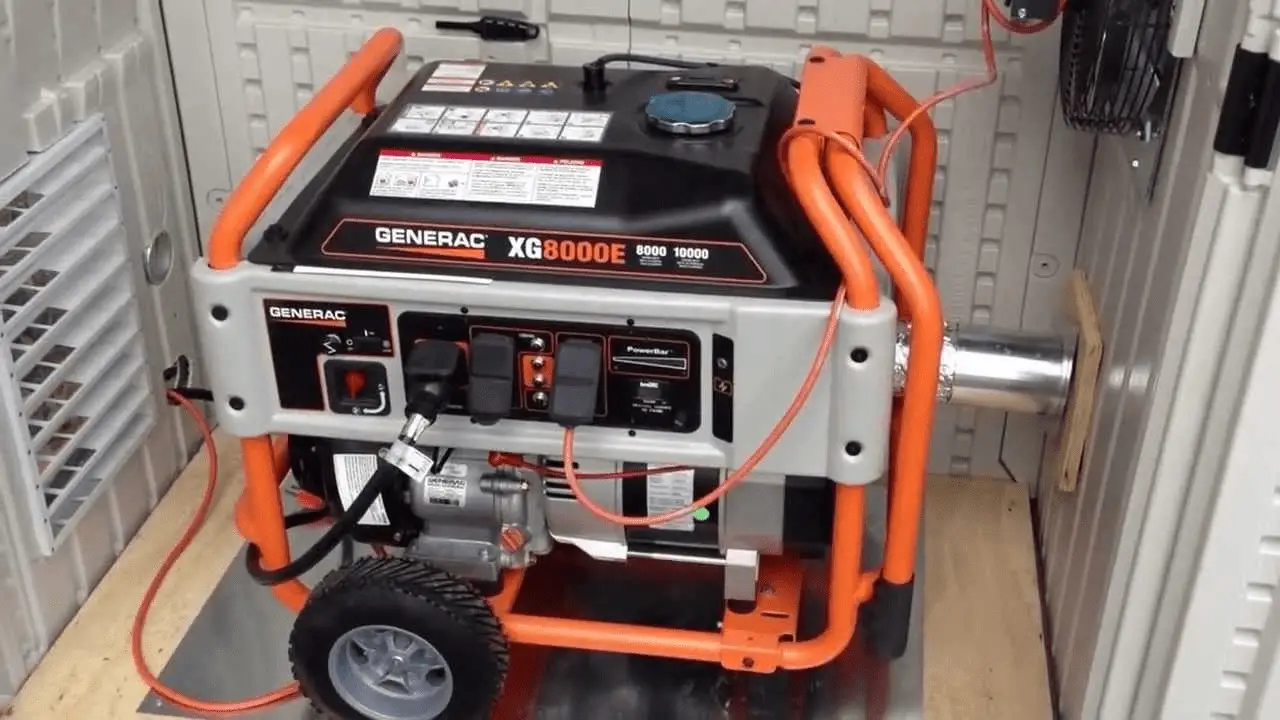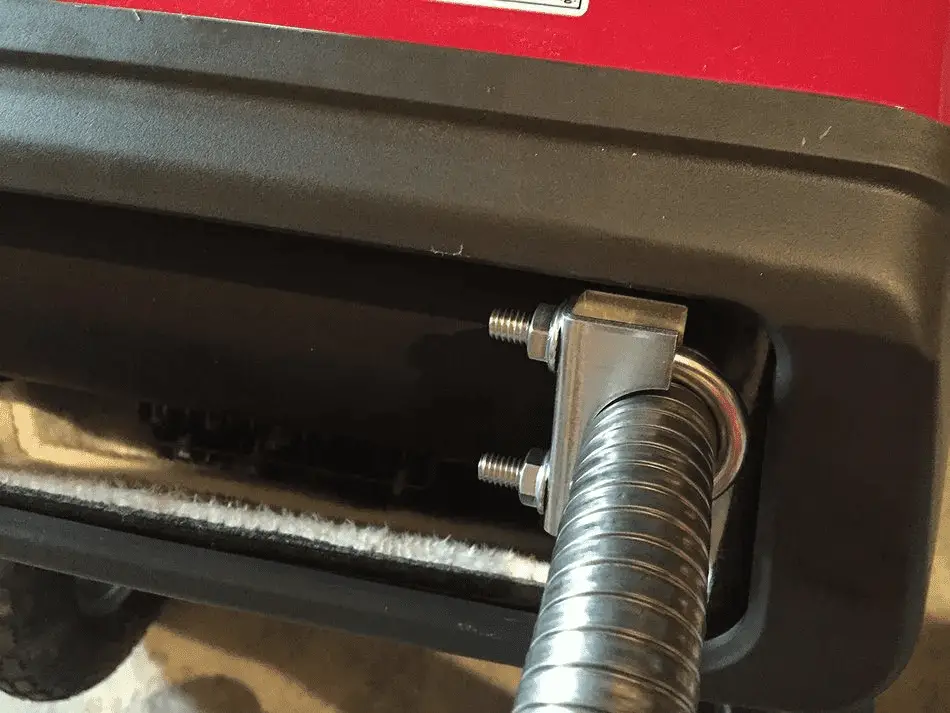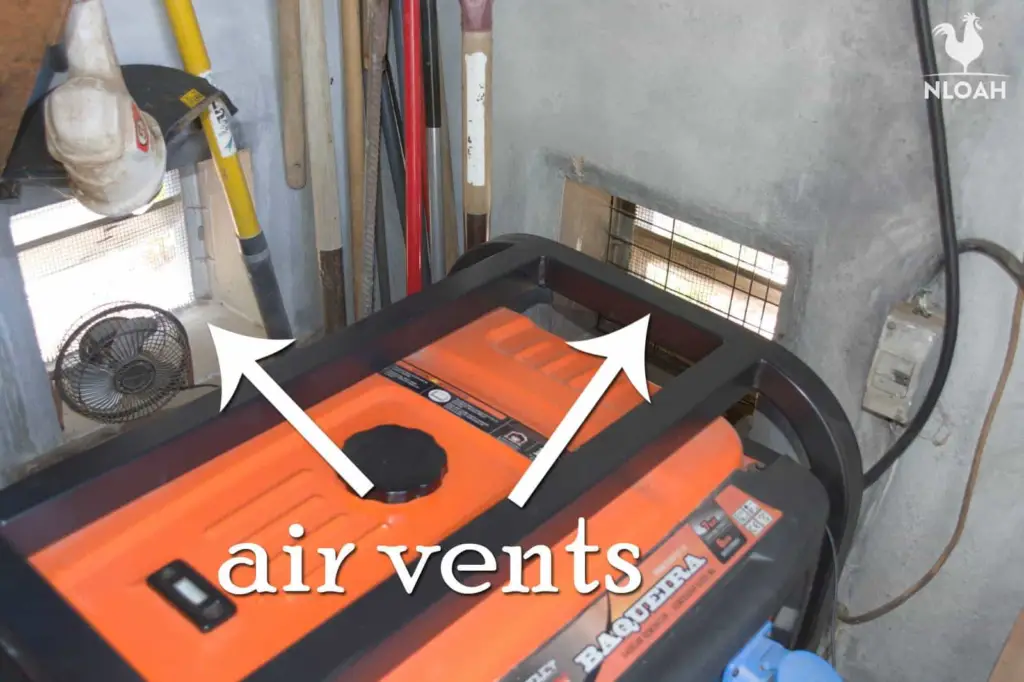Since running a generator solely in a garage is not recommended, people try to use some creativity to safely run the generator. Using an exhaust pipe with the generator may come to your rescue here because it ensures proper ventilation.
But, what to do for running generator in garage with exhaust hose?
First, you need a suitable pipe and clamp to adjust the exhaust of the generator. The pipe should be ¼ inch bigger than the diameter of the generator’s exhaust with a long length. The clamp should be exactly the same size as the exhaust. Then route the pipe to a well-ventilated location through a slightly opened window or door.
It’s time to go through the whole procedure of running a generator in a garage with an exhaust pipe in a long, deep manner. Let’s start with an initial question.
Can You Run A Generator in the Garage with an Exhaust Pipe?
Yes, you can run a generator in a garage with an exhaust pipe. When the exhaust is properly vented outside and the garage is well-ventilated, a generator can be safely operated in a garage.
Using a generator without proper ventilation can be dangerous since generators emit carbon monoxide. Installing an exhaust pipe and arranging a proper ventilation system for your generator is mandatory.
The garage is a high-risk area for running generators without proper exhaust systems. Because you don’t want the fumes from the generator to seep into your home, which can have bad consequences.
So, proper ventilation is necessary to prevent such a situation from occurring, which is achieved with an exhaust pipe. Whether Duromax or Champion, whichever portable generator you have, this is mandatory. But installing an exhaust pipe properly can be tricky.

Can You Run a Propane Generator in a Garage?
No, you shouldn’t operate a propane generator inside a garage. Because propane generators will have carbon monoxide in their exhaust and produce a toxic gas that can quickly build up in enclosed spaces like a garage.
In that case, the propane generator must be installed outside the house, in a waterproof housing that has adequate drainage, close to the circuit breaker panel.
Can You Run a Generator in the Garage with the Door Cracked?
It’s not safe to run a generator in a garage even with the garage door cracked open. You should not gamble with carbon monoxide or fire because the risk is too great. At least 6 feet must be spaced between your generator and your home.
Generators should not be placed too close to doorways or windows. This is to prevent toxic carbon monoxide gas from entering the household. This gas is invisible but results in illness, even fatality.
However, ensuring proper ventilation is an ultimate requirement to run the generator in the garage. There is a specific process to do that. You must follow the process to perform your task.
How to Run A Generator in A Garage with an Exhaust Pipe?
It is best to add an exhaust extension to your garage if you desire to run your generator there. A generator exhaust extension allows all fumes to escape to a safe, well-ventilated location outside. You must make sure the generator’s exhaust is tightly sealed by the exhaust tube and that there aren’t any gaps.
To install the exhaust pipe do follow the guidelines below.
Required Tools
You need some exact tools to perform the installation of your generator with an exhaust pipe.
- Tape measure
- Flexible exhaust pipe (slightly bigger than the exhaust)
- A clamp
- A screwdriver
Pre-Installing Activities Before Setting Up an Exhaust Pipe
There are some mandatory activities you need to do before the actual procedure. Let’s go through them in detail
Activity 1: Measuring Exhaust & Picking Pipe
Measuring the exhaust accurately is the first requirement of the whole process. Determine the diameter of the exhaust from the generator with a tape measure. Then find a flexible pipe that is easy to move, and can be routed through different spaces.
Always choose a pipe that is at least ¼ inch bigger than the generator’s exhaust. Ensure that the length of the pipe reaches your well-ventilated area. You need to set a place where discharging the carbon monoxide won’t be harmful. So, always choose a longer pipe size.
Activity 2: Finding a Perfect Clamp
Sealing the exhaust pipe’s gap from the generator requires a clamp. It also helps to eliminate carbon monoxide emissions in the garage. The right clamp is essential to a smooth installation.
Ensure that the clamp you choose is the same diameter as the exhaust pipe on your generator. A job like that will result in the best finish.

Procedures for Installing Exhaust Pipe
Read through the following steps to install your generator exhaust pipe. Let’s get to know them one by one.
Step 1: Attaching the Pipe
Insert one end of the exhaust pipe into the generator exhaust outlet. Now, use the clamp to secure the pipe to the outlet. Then, tighten the clamp using the screwdriver. In order to prevent leaks, make sure that the clamp is tightened very well.
It is possible to reduce the generator’s noise level at this point by installing a muffler. To accomplish that, install a muffler.
Step 2: Directing the Pipe to a Well-Ventilated Area
At this step, take the other end of the exhaust pipe and direct it to a well-ventilated place outside your garage. A slightly opened garage door may allow you to route it under it, or you may route it through the windows. But this is a temporary approach, as you have to keep the windows slightly open for the pipe. During storms, you may find it troublesome.
Alternatively, you can vent the generator in your garage by connecting the exhaust system to a PVC vent pipe. This process requires expertise, so you should call an expert.
Step 3: Maximizing the Ventilation
Even if you have installed a system that emits harmful gasses to a particular area, you must still ventilate the garage thoroughly to ensure its safety.
To do that, make sure the garage’s windows and door are open. It will help to have maximum airflow in the garage. Then, turn on the generator and start it up.

Tips for Safely Running the Generator in the Garage
There are some functional tips you should follow to avoid any unwanted circumstances.
- Never ever turn on the generator without plugging the cables into it. Otherwise, any short circuit could electrocute you.
- When running the generator in the garage, make sure you don’t keep the gasoline container in the garage
- Never ever refill the generator while it’s running. First, turn off the generator and then fill the tank.
- Never Overload the generator. Knowing what size generator is for different compressors is crucial. Use the manual to know the total wattage it can handle.
- Generators should only be used when necessary, and they should be turned off when not in use. Overnight or for long periods, it’s not recommended to run it continuously.
- Make sure the exhaust pipe is securely attached to the generator and is not leaking fumes.
- Also, make sure to clean the exhaust pipe once every couple of months.
Frequently Asked Questions (FAQs):
Is it OK to run a generator in an open garage?
Yes, it’s completely ok to run a generator in an open garage. Running a generator in an open garage may reduce the risk of carbon monoxide poisoning compared to running it in an enclosed garage. Make sure to keep opening the door or window even if the garage is open.
How do you ventilate a generator room?
It is necessary to have a wide range of fans in a generator room. Generators and other equipment perform better when it is optimized. Heat is prevented within the generator room by using exhaust fans. On the other hand, supply fans deliver fresh air for combustion and to make generators operate more efficiently.
Can you run a generator in a detached garage?
Yes, you can run a generator in a detached garage with an open garage door and open window. To prevent CO gas from poisoning the air in your garage, keep the door and window open. Place the generator on a level surface away from gasoline, oil, and paint, and ensure it is away from flammable materials.
Conclusion
Here we are, at the end of the discussion. I hope you got to know everything about running generator in garage with exhaust hose. We’ve also discussed all about operating a generator inside a garage or in an enclosed location.
Keeping your family safe from carbon monoxide poisoning begins with venting your generator in your garage. To improve the overall safety of your home, you should implement an exhaust pipe.
Best wishes!

